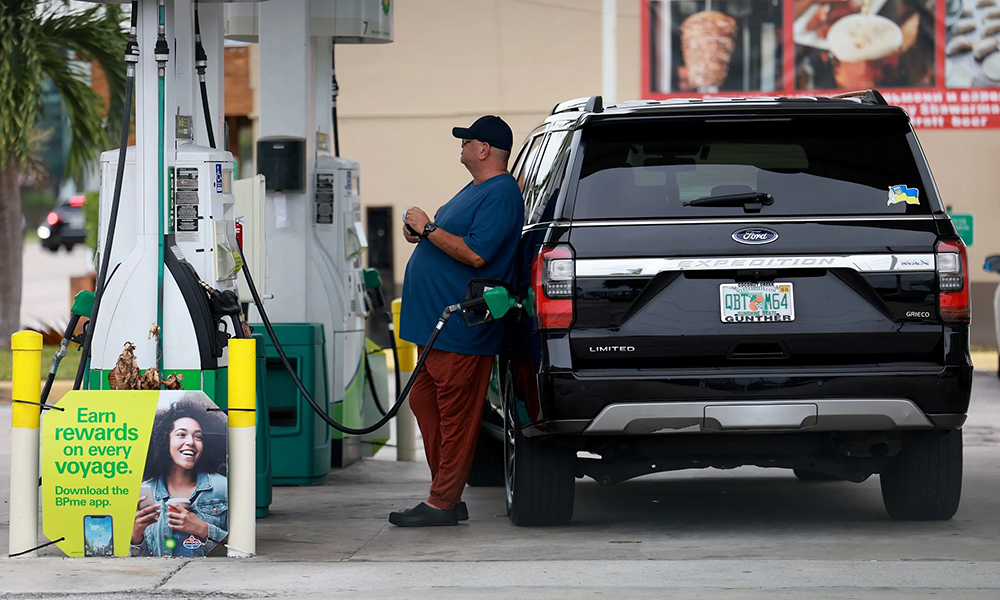
顽固的通胀、不断增长的物价、更加紧张的预算,这些词语真实地反映了美国消费者过去几年中所面临的经济格局。然而事实证明,尽管遭遇经济逆风,美国消费者依然韧性十足。为了适应这种格局,他们改变了自身的消费重心,做出了取舍,而且有些人还调整了生活方式。正因为如此,美国消费者成功地度过了这段通胀时期,并依然认为未来可期。
美联储(Federal Reserve)如今已经拉开了外界所预期的系列降息举措序幕,并以此为美国消费者开启了新的经济格局。为了更好地支持客户,帮助他们应对未来动态,金融服务提供商应评估其当前的产品服务,以确保它们能够满足客户不断变化的需求。要做到这一点,金融服务提供商就必须了解美国消费者在应对近期财务挑战时都采取了哪些举措。
开支削减与取舍
桑坦德银行美国分行(Santander U.S.)跟踪了美国中等收入家庭18个月的花销行为。其调查显示,美国消费者正在通过做出必要的取舍来应对当前的经济形势。
为了应对通胀,美国消费者重新制作了预算。例如,90%的消费者称自己削减了某些领域的开支,64%的消费者称对预算进行了大幅削减,以避免累及其积蓄。值得注意的是,为了应对日益上涨的日用品和燃油价格,美国很大一部分中等收入人群据称取消了在某些领域的开支,例如度假、外出就餐和娱乐等。
他们还推迟了大件购买计划。例如,超过半数的中等收入家庭在去年搁置了汽车购买计划。通过做出这些牺牲,很多消费者在努力实现其长期财务目标的同时实现了收支平衡。80%的中等收入家庭仍能按时偿还账单,72%的家庭表示已步入财务成功的正轨,而实现财务成功指的是在不做出巨大牺牲的情况下有能力负担生活开支,应对紧急情况,并追求人生目标。
不断变化的消费观念和重点
随着消费习惯的转变,消费者的偏好和观念也发生了改变。美国家庭对财务成功的看法正在发生颠覆式的变化。数代美国民众眼中传统的财务成功标签,例如买房,已经不再像以前那样是其关注的重点。由于房价的持续飙升,大多数美国中等收入人群不再将买房看作是通往财务成功的必经之路。相反的是,他们觉得租房对于大多数家庭来说是一个更加现实的替代方案。当前的消费者更看重承担能力而不是房产。与买房这个传统的“美国梦”相比,60%的消费者认为有一个在自身承担范围之内的住宅,哪怕是租的,对于实现财务成功来说更为重要。
随着消费者对购房关注度的下降,很多消费者更加重视维持车辆开销,因为汽车对于上班通勤以及获取更多的就业机会来说至关重要。美国中等收入人群基本上没有别的通勤方式,有75%的人群称,车辆的缺失将影响其经济状况;有70%的人群表示,他们愿意牺牲其他的预算项目来维持其车辆开销。
随着消费者行为和态度的改变,桑坦德银行也调整了自身的产品和服务以满足消费者当前的需求。近些年来,我们已经退出了零售抵押市场,同时将重心放在了多单元住宅贷款业务,以提供更多的房产选项,满足消费者的需求。与黑石集团(Blackstone)一样,桑坦德银行获选与联邦存款保险公司(Federal Deposit Insurance Corporation)成立合资企业,为房租管制和房租稳定型多单元住房贷款提供关键融资和服务支持,这些贷款均属于已破产的签名银行(Signature Bank)的资产组合。
有鉴于车辆对美国家庭的重要性,桑坦德银行将继续拓展公司的汽车借贷业务,以确保能够为各类客户提供其所需的汽车融资,包括首次购车客户、信用有瑕疵的客户以及优质借贷客户。在这一过程中,我们将与美国第一资本金融银行(Capital One)这类服务于信贷领域各类客户的全国性银行开展合作。
下一个周期
因此,接下来将何去何从?美联储的此次降息有望拉开其系列降息举措的序幕,亦是在告知世人其期待已久的通胀降温终于来临。尽管物价企稳是一个可喜的信号,但它对于消费者来说并非是终点,而是新阶段的起点。
很多消费者推迟了大件购买计划,因为该计划需要融资助力;很多消费者错过了提升其储蓄的机会,因为他们需要简单、可及的各类方案来帮助他们实现其目标。
过去几年告诉我们,无论形势如何变化,消费者都会付诸行动并坚韧地去面对。那些能够根据消费者不断变化的需求和喜好进行调整的金融服务提供商,将成为他们实现其财务成功目标和愿景的关键合作伙伴。(财富中文网)
蒂姆·温恩斯是桑坦德银行美国分行首席执行官。
Fortune.com上评论文章中表达的观点仅代表作者个人观点,并不代表《财富》杂志的观点和立场。
译者:冯丰
审校:夏林
顽固的通胀、不断增长的物价、更加紧张的预算,这些词语真实地反映了美国消费者过去几年中所面临的经济格局。然而事实证明,尽管遭遇经济逆风,美国消费者依然韧性十足。为了适应这种格局,他们改变了自身的消费重心,做出了取舍,而且有些人还调整了生活方式。正因为如此,美国消费者成功地度过了这段通胀时期,并依然认为未来可期。
美联储(Federal Reserve)如今已经拉开了外界所预期的系列降息举措序幕,并以此为美国消费者开启了新的经济格局。为了更好地支持客户,帮助他们应对未来动态,金融服务提供商应评估其当前的产品服务,以确保它们能够满足客户不断变化的需求。要做到这一点,金融服务提供商就必须了解美国消费者在应对近期财务挑战时都采取了哪些举措。
开支削减与取舍
桑坦德银行美国分行(Santander U.S.)跟踪了美国中等收入家庭18个月的花销行为。其调查显示,美国消费者正在通过做出必要的取舍来应对当前的经济形势。
为了应对通胀,美国消费者重新制作了预算。例如,90%的消费者称自己削减了某些领域的开支,64%的消费者称对预算进行了大幅削减,以避免累及其积蓄。值得注意的是,为了应对日益上涨的日用品和燃油价格,美国很大一部分中等收入人群据称取消了在某些领域的开支,例如度假、外出就餐和娱乐等。
他们还推迟了大件购买计划。例如,超过半数的中等收入家庭在去年搁置了汽车购买计划。通过做出这些牺牲,很多消费者在努力实现其长期财务目标的同时实现了收支平衡。80%的中等收入家庭仍能按时偿还账单,72%的家庭表示已步入财务成功的正轨,而实现财务成功指的是在不做出巨大牺牲的情况下有能力负担生活开支,应对紧急情况,并追求人生目标。
不断变化的消费观念和重点
随着消费习惯的转变,消费者的偏好和观念也发生了改变。美国家庭对财务成功的看法正在发生颠覆式的变化。数代美国民众眼中传统的财务成功标签,例如买房,已经不再像以前那样是其关注的重点。由于房价的持续飙升,大多数美国中等收入人群不再将买房看作是通往财务成功的必经之路。相反的是,他们觉得租房对于大多数家庭来说是一个更加现实的替代方案。当前的消费者更看重承担能力而不是房产。与买房这个传统的“美国梦”相比,60%的消费者认为有一个在自身承担范围之内的住宅,哪怕是租的,对于实现财务成功来说更为重要。
随着消费者对购房关注度的下降,很多消费者更加重视维持车辆开销,因为汽车对于上班通勤以及获取更多的就业机会来说至关重要。美国中等收入人群基本上没有别的通勤方式,有75%的人群称,车辆的缺失将影响其经济状况;有70%的人群表示,他们愿意牺牲其他的预算项目来维持其车辆开销。
随着消费者行为和态度的改变,桑坦德银行也调整了自身的产品和服务以满足消费者当前的需求。近些年来,我们已经退出了零售抵押市场,同时将重心放在了多单元住宅贷款业务,以提供更多的房产选项,满足消费者的需求。与黑石集团(Blackstone)一样,桑坦德银行获选与联邦存款保险公司(Federal Deposit Insurance Corporation)成立合资企业,为房租管制和房租稳定型多单元住房贷款提供关键融资和服务支持,这些贷款均属于已破产的签名银行(Signature Bank)的资产组合。
有鉴于车辆对美国家庭的重要性,桑坦德银行将继续拓展公司的汽车借贷业务,以确保能够为各类客户提供其所需的汽车融资,包括首次购车客户、信用有瑕疵的客户以及优质借贷客户。在这一过程中,我们将与美国第一资本金融银行(Capital One)这类服务于信贷领域各类客户的全国性银行开展合作。
下一个周期
因此,接下来将何去何从?美联储的此次降息有望拉开其系列降息举措的序幕,亦是在告知世人其期待已久的通胀降温终于来临。尽管物价企稳是一个可喜的信号,但它对于消费者来说并非是终点,而是新阶段的起点。
很多消费者推迟了大件购买计划,因为该计划需要融资助力;很多消费者错过了提升其储蓄的机会,因为他们需要简单、可及的各类方案来帮助他们实现其目标。
过去几年告诉我们,无论形势如何变化,消费者都会付诸行动并坚韧地去面对。那些能够根据消费者不断变化的需求和喜好进行调整的金融服务提供商,将成为他们实现其财务成功目标和愿景的关键合作伙伴。(财富中文网)
蒂姆·温恩斯是桑坦德银行美国分行首席执行官。
Fortune.com上评论文章中表达的观点仅代表作者个人观点,并不代表《财富》杂志的观点和立场。
译者:冯丰
审校:夏林
Santader's survey found that while U.S. consumers now place less emphasis on owning a home, many are placing a greater priority on maintaining vehicle access.
Stubborn inflation, rising prices, tighter budgets. These six words have described the economic landscape for the American consumer over the past several years. Yet, American consumers have proven resilient in the face of economic headwinds. They have adapted to conditions by shifting their spending priorities, making trade-offs, and, in some cases, adjusting the way they live. As a result, the American consumer has been managing through this inflationary period and is remaining optimistic about the future.
With the Federal Reserve now starting what is expected to be a series of interest rate cuts, a new economic phase will begin for today’s consumer. To better support customers and to help them navigate future dynamics, financial services providers should evaluate their current offerings to ensure they are meeting evolving needs. To do so, they must understand how Americans have responded to recent financial challenges.
Spending cuts and trade-offs
Santander U.S. has tracked the financial behaviors of middle-income American households over an 18-month period, and our research shows that the American consumer is making the necessary trade-offs to navigate today’s environment.
Americans have reworked their budgets to manage inflation. For instance, nine in 10 consumers indicated they were cutting back in some area of spending and 64% noted they have made significant budget cuts to avoid spending through their savings. Notably, to combat rising grocery and gas prices, a majority of middle-income Americans reported pulling back on summer spending in areas such as vacations, eating out, and entertainment.
They also have delayed major purchases. For example, more than half of middle-income households postponed purchasing a vehicle in the past year. By making these trade-offs, many consumers have continued to make ends meet while working toward their long-term financial goals. Eight in 10 middle-income households have remained current on their bills, and 72% said they are on the right track toward financial prosperity. Achieving financial prosperity includes being able to cover living expenses, handle emergencies, and pursue life goals without significant trade-offs.
Shifting consumer mindsets and priorities
As spending habits have shifted, so to have consumers’ preferences and mindsets. American households are experiencing a transformational change in how they view financial success. Traditional hallmarks that have defined prosperity for generations of Americans, such as home ownership, are no longer the priorities they used to be. As home prices continue to soar, the majority of middle-income Americans no longer view owning a home as a necessary pathway to financial prosperity. Instead, renting is considered a more realistic alternative for many households. For today’s consumer, affordability outweighs home equity, with six in 10 renters believing having an affordable home, even if renting, is more important to achieving financial prosperity than the historic “American dream” of homeownership.
As consumers place less emphasis on owning a home, many are placing a greater priority on maintaining vehicle access, as cars are vital for getting to and from work and accessing expanded employment opportunities. With few middle-income Americans having commuting alternatives, three in four said not having access to a vehicle would impair their financial situation, and 70% indicated they would be willing to sacrifice other budgetary items to maintain access to a vehicle.
With this shift in consumer behaviors and attitudes, Santander has adapted our products and services to address consumers’ current needs. In recent years, we have exited the retail mortgage space, while prioritizing our multifamily housing lending business to enable more housing options that consumers need and demand. Like Blackstone, Santander was selected to enter into a joint venture with the Federal Deposit Insurance Corporation (FDIC) to provide critical financing and servicing support for rent-controlled and rent-stabilized multifamily loans that were part of the failed Signature Bank’s portfolio.
And given the importance of vehicles to American households, we continue to expand our auto lending business to ensure we are able to provide needed vehicle financing to customers ranging from first-time buyers to those with less-than-perfect credit to super-prime borrowers. In this effort, we join the ranks of banks such as Capital One, among other national banks, who are catering to customers across the entire credit spectrum.
The next cycle
So, what comes next? This cut by the Federal Reserve is likely to be the beginning of a series of moves to reflect a long-awaited cooling in inflation. While price stability is a welcome sign, it won’t represent the finish line for consumers but rather the beginning of the next chapter.
Many consumers have delayed big purchases–they will need help financing them. Many consumers have missed out on opportunities to grow their savings–they will need simple and accessible options that can help them meet their goals.
If the past few years have taught us anything, the consumer will take action and be resilient, no matter the conditions. Financial services providers that are able to evolve with consumers’ changing needs and preferences will be critical partners in helping them achieve their goals and their vision of financial prosperity.
Tim Wennes is the CEO of Santander U.S.
The opinions expressed in Fortune.com commentary pieces are solely the views of their authors and do not necessarily reflect the opinions and beliefs of Fortune.






